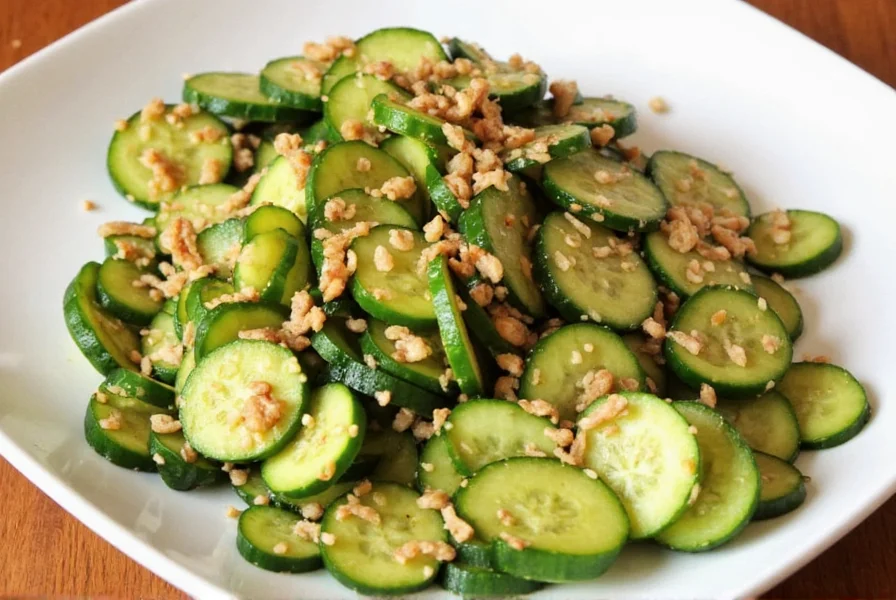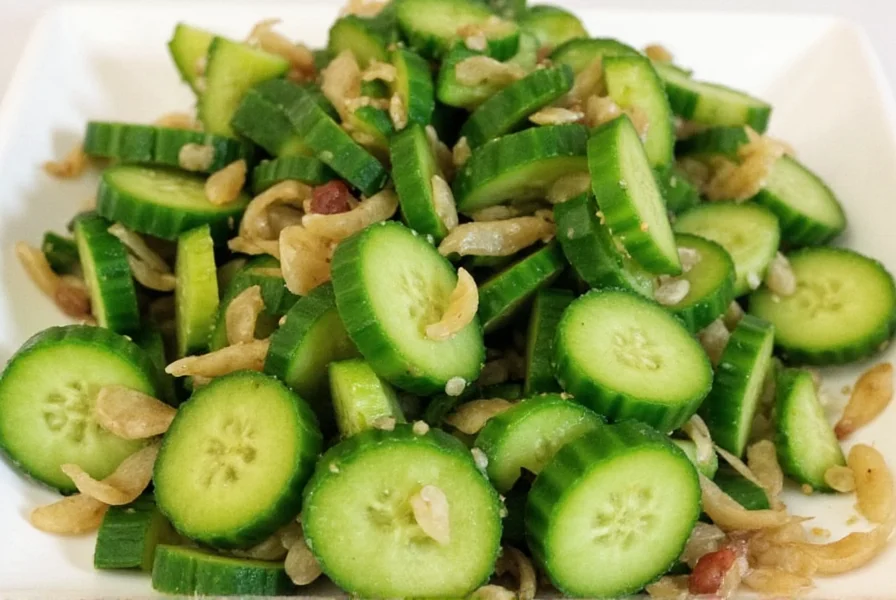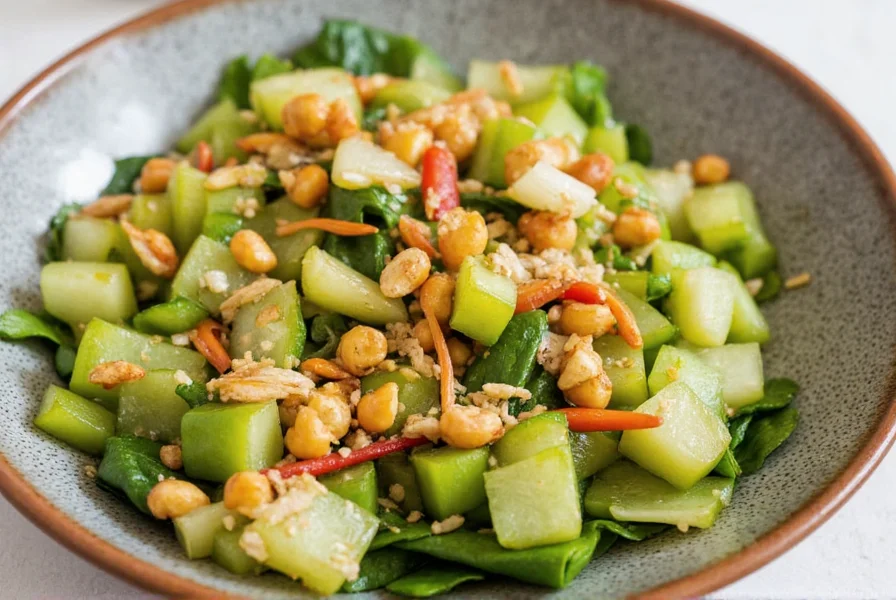Table of Contents
Introduction to Korean Cucumber Dishes
Korean cucumbers are a staple in Korean cuisine, prized for their crisp texture and ability to absorb bold flavors. Unlike regular cucumbers, they're smaller, slimmer, and have a slightly bitter taste that makes them perfect for traditional dishes like oi muchim (cucumber salad) and kimchi. This guide provides authentic recipes, step-by-step instructions, and expert tips to help you master Korean cucumber dishes at home.

Authentic Oi Muchim Recipe
Oi muchim is Korea's beloved cucumber salad, known for its refreshing crunch and spicy-savory flavor. Here's how to make it perfectly:
Ingredients
- 4 Korean cucumbers (or Persian cucumbers as substitute)
- 1 tbsp sea salt
- 2 tbsp gochugaru (Korean red pepper flakes)
- 1 tbsp soy sauce
- 1 tbsp rice vinegar
- 1 tsp sugar
- 2 garlic cloves, minced
- 1 tsp sesame oil
- 1 tbsp toasted sesame seeds
Instructions
- Wash cucumbers and slice into 2-inch pieces. Cut each piece lengthwise into quarters, then lightly crush with a knife to create ridges for flavor absorption.
- Toss cucumber pieces with sea salt and let sit for 15 minutes. Rinse and pat dry.
- In a bowl, mix gochugaru, soy sauce, rice vinegar, sugar, garlic, and sesame oil.
- Add cucumbers to the sauce and toss thoroughly. Let marinate for 10 minutes before serving.
- Top with sesame seeds and serve chilled.
Korean Cucumber Kimchi
This quick cucumber kimchi is perfect for beginners and ready in just 2 hours!
Ingredients
- 4 Korean cucumbers
- 2 tbsp salt
- 3 tbsp gochugaru
- 1 tbsp minced garlic
- 1 tsp grated ginger
- 1 tbsp fish sauce (or vegan substitute)
- 2 green onions, sliced
- 1 tbsp sugar
Instructions
- Slice cucumbers into 2-inch pieces. Toss with salt and let sit for 15 minutes. Rinse and drain.
- Mix gochugaru, garlic, ginger, fish sauce, sugar, and green onions in a bowl.
- Add cucumbers to the mixture and massage gently to coat evenly.
- Transfer to a clean jar and refrigerate for at least 2 hours before serving.
| Dish | Key Ingredients | Prep Time | Best Served With | Difficulty |
|---|---|---|---|---|
| Oi Muchim | Korean cucumbers, gochugaru, sesame oil | 20 minutes | Grilled meats, rice bowls | Easy |
| Cucumber Kimchi | Korean cucumbers, gochugaru, fish sauce | 15 minutes (+2 hours marinating) | Bibimbap, soups | Easy |
| Spicy Stir-Fry | Korean cucumbers, gochujang, garlic | 10 minutes | Stir-fried rice, noodles | Medium |
Spicy Cucumber Stir-Fry
This quick stir-fry is perfect for busy weeknights:
Ingredients
- 2 Korean cucumbers, sliced into rounds
- 2 tbsp gochujang (Korean chili paste)
- 1 tbsp soy sauce
- 1 tbsp honey
- 1 tsp sesame oil
- 2 garlic cloves, minced
- 1 tbsp vegetable oil
- 1 tsp toasted sesame seeds
Instructions
- Heat vegetable oil in a pan over medium-high heat.
- Add garlic and stir for 30 seconds until fragrant.
- Add cucumber slices and stir-fry for 2-3 minutes until slightly tender.
- Mix gochujang, soy sauce, honey, and sesame oil in a bowl. Pour over cucumbers.
- Stir-fry for another minute until coated. Garnish with sesame seeds.
How to Choose Cucumbers for Cooking
When selecting cucumbers for Korean dishes, look for:
- Firmness: Squeeze gently - they should feel solid with no soft spots
- Color: Bright, uniform green without yellowing
- Texture: Smooth skin with small, even bumps (avoid large, rough bumps)
- Size: 6-8 inches long for best texture (smaller cucumbers are sweeter)
- Weight: Heavier cucumbers indicate higher water content and freshness
Frequently Asked Questions
Can I use regular cucumbers instead of Korean cucumbers?
Yes, but with adjustments. Persian cucumbers are the closest substitute. Regular English cucumbers work but have thicker skin - peel them first. Avoid seed-heavy cucumbers as they make dishes watery. For kimchi, Korean cucumbers hold up better during fermentation.
How long does oi muchim last in the fridge?
Properly stored in an airtight container, oi muchim stays fresh for 3-4 days. The flavor actually improves after the first day as the cucumbers absorb more seasoning. Avoid freezing as it destroys the crisp texture.
Why do Korean cucumbers need to be crushed before cooking?
Crushing creates small cracks in the cucumber skin that allow marinades to penetrate deeper. This technique also releases excess water that would otherwise dilute the flavors. It's a traditional Korean method for maximizing flavor absorption.
What's the difference between gochugaru and regular chili flakes?
Gochugaru is made from Korean red peppers and has a distinctive sweet, smoky flavor with moderate heat. Regular chili flakes are typically hotter and lack the complex flavor profile. For authentic Korean dishes, gochugaru is essential.
Can I make vegan Korean cucumber dishes?
Absolutely! Replace fish sauce with soy sauce or vegan fish sauce substitute. Many Korean cucumber dishes are naturally vegan - just check for animal products in seasonings. The spicy stir-fry and oi muchim recipes above work perfectly vegan.
Conclusion
Korean cucumbers transform simple meals into authentic culinary experiences. From refreshing oi muchim to spicy kimchi, their unique texture and flavor absorption make them indispensable in Korean cooking. With these recipes and tips, you can easily recreate restaurant-quality dishes at home. Remember: freshness matters most - always choose firm, vibrant cucumbers for the best results.












 浙公网安备
33010002000092号
浙公网安备
33010002000092号 浙B2-20120091-4
浙B2-20120091-4